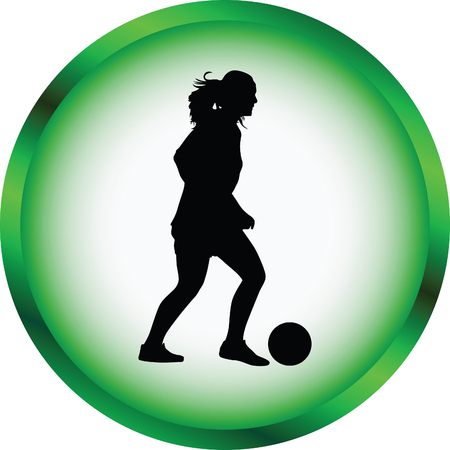1. Introduction to Sports Support Systems in the UK
The United Kingdom boasts a robust and multifaceted network of sports support systems that cater to both professional athletes and amateur enthusiasts. These systems are underpinned by a blend of governmental agencies, national governing bodies, charitable organisations, and private sector services. At the professional level, key institutions such as UK Sport, Sport England, and respective national sports governing bodies play pivotal roles in providing funding, infrastructure, research, and policy guidance aimed at ensuring athlete welfare. For amateur participants, local councils, community clubs, and voluntary groups are integral in offering accessible resources and guidance. Across both domains, there is a strong emphasis on injury prevention and effective recovery strategies, particularly for tendon and ligament injuries which are prevalent across many sporting disciplines. The coordinated efforts among physiotherapists, sports medicine specialists, coaches, and support staff reflect a holistic approach that encompasses education, early intervention programmes, rehabilitation pathways, and return-to-play protocols. This comprehensive framework not only enhances athletic performance but also safeguards long-term health outcomes for all individuals engaged in sport throughout the UK.
Common Tendon and Ligament Injuries in British Sport
Within the UK, sport is an integral part of national culture, with football, rugby, and athletics standing out as particularly popular disciplines. Participation at both professional and amateur levels brings significant health benefits, but it also carries a notable risk of musculoskeletal injuries, particularly to tendons and ligaments. Understanding the types and prevalence of these injuries is crucial for developing effective prevention and recovery systems.
Prevalence Among Popular UK Sports
Tendon and ligament injuries are among the most frequently reported issues in British sport. The nature of these injuries often depends on the physical demands and movement patterns specific to each sport:
| Sport | Common Tendon Injuries | Common Ligament Injuries | Prevalence & Risk Factors |
|---|---|---|---|
| Football (Soccer) | Achilles tendinopathy, patellar tendinopathy | Ankle sprains, anterior cruciate ligament (ACL) tears | High due to sudden changes in direction, jumping, and tackling; more common during matches than training |
| Rugby | Hamstring tendon strains, rotator cuff injuries | Knee ligament injuries (MCL/ACL), shoulder dislocations | Frequent in contact situations; tackling and scrummaging increase risk |
| Athletics | Apollos heel (Achilles tendinopathy), hamstring tendon injuries | Ankle ligament sprains, knee ligament strains | Sprinting/jumping events carry higher risk; overuse a significant factor in injury development |
Key Injury Characteristics in the UK Context
The majority of tendon injuries in British athletes are related to repetitive strain or acute overload—commonly seen in the Achilles or patellar tendons. Ligament injuries, on the other hand, are often associated with high-impact events such as tackles or falls. Notably, ACL ruptures remain a primary concern in football and rugby, frequently leading to long rehabilitation periods and potential career disruption.
Amateur vs Professional Incidence Rates
While professionals benefit from superior conditioning and medical oversight, amateur athletes may face elevated risks due to suboptimal technique, limited access to physiotherapy, and less structured training environments. Community clubs across the UK report similar injury patterns but often experience longer recovery times compared to elite teams who have dedicated support staff.
![]()
3. Preventative Strategies Across Professional and Amateur Levels
Comparing Organisational Approaches to Injury Prevention
Within the UK, both professional sports clubs and amateur grassroots organisations employ a variety of preventative measures to mitigate the risk of tendon and ligament injuries. While resources and infrastructure differ significantly between these two levels, there is an increasing emphasis on evidence-based practice across the board. This section analyses the approaches adopted by both sectors, highlighting their respective strengths and challenges.
Training Methods: Structured Versus Adaptive Regimens
Professional clubs typically utilise highly structured training regimens, developed in consultation with sports scientists and medical staff. These programmes emphasise load management, sport-specific conditioning, and periodisation to reduce overuse injuries. In contrast, grassroots organisations often rely on volunteer coaches who may lack formal training in injury prevention. However, many local clubs are now adopting basic warm-up routines—such as the FA’s “The 11+”—to help players at all levels build resilience against musculoskeletal injuries.
Access to Physiotherapy and Medical Support
The disparity in access to physiotherapy is a key differentiator between professional and amateur settings. Elite athletes benefit from on-site physiotherapists who provide ongoing assessment, prehabilitation exercises, and immediate intervention following minor complaints. Conversely, amateur athletes typically access NHS services or local private clinics after injury occurs. Some grassroots clubs are bridging this gap by forming partnerships with local physios or universities, offering periodic screening sessions to educate participants on early signs of tendon and ligament strain.
Educational Initiatives: Building Awareness and Self-Management Skills
Education plays a pivotal role in injury prevention at all levels of sport. Professional clubs deliver regular workshops for players, coaches, and support staff—covering topics such as biomechanics, nutrition, and recovery strategies tailored for tendon health. At the community level, national governing bodies like Sport England produce accessible guidance and online resources aimed at raising awareness about safe participation. Initiatives such as mandatory coach education modules ensure that even those with limited expertise can promote safer practices within their teams.
Summary of Preventative Strategies
In summary, while professional sports environments in the UK offer comprehensive systems for preventing tendon and ligament injuries, grassroots organisations are increasingly adopting similar principles within their resource constraints. The convergence of structured training methods, improved access to physiotherapy, and widespread educational campaigns is gradually enhancing the safety culture across all tiers of British sport.
Role of the NHS and Private Healthcare in Injury Management
The UK’s approach to sports injury management, particularly for tendon and ligament injuries, is shaped by a dynamic interplay between the National Health Service (NHS), private healthcare providers, and the sporting community. Understanding these relationships is crucial for both professional and amateur athletes seeking timely recovery and optimal rehabilitation outcomes.
NHS Support for Sports Injuries
The NHS serves as the backbone of medical care in the UK, providing accessible treatment for acute sports injuries through general practitioners (GPs), physiotherapy services, and specialist referrals. The system prioritises clinically urgent cases, but routine musculoskeletal injuries may face longer waiting times, especially in non-elite sporting contexts. The NHS also offers structured rehabilitation programmes led by physiotherapists, focusing on evidence-based protocols for tendon and ligament recovery.
Private Healthcare Provision
Private healthcare fills critical gaps left by the NHS, offering expedited diagnostic imaging (such as MRI or ultrasound scans), consultant-led care, and tailored rehabilitation programmes. Private clinics are often utilised by professional clubs and athletes who require rapid intervention to minimise time away from sport. Amateurs with private insurance or means may also access these services to bypass NHS waiting periods. Key advantages include flexible appointment scheduling, multidisciplinary teams, and state-of-the-art facilities.
Comparison of NHS and Private Healthcare Approaches
| Aspect | NHS | Private Healthcare |
|---|---|---|
| Access Speed | Longer waiting times for non-urgent cases | Rapid access; minimal waiting times |
| Cost to Athlete | Free at point of use (UK residents) | Paid via insurance or out-of-pocket |
| Rehabilitation Services | Standardised protocols; group sessions common | Bespoke rehab plans; 1-to-1 sessions typical |
| Specialist Referrals | GP referral required; prioritised by need | Direct access to specialists possible |
| Facilities & Equipment | Adequate for most needs; variable availability | Cutting-edge technology more widely available |
The Role of Sports Clubs in Navigating Care Pathways
Professional sports clubs in the UK frequently employ dedicated medical teams—including physiotherapists, sports physicians, and orthopaedic consultants—who coordinate closely with both NHS and private providers. These teams facilitate seamless transitions from acute injury care to advanced rehabilitation, often leveraging private healthcare for faster diagnostics and interventions. Amateur clubs may offer basic first aid or partner with local clinics but generally rely more heavily on NHS pathways due to budget constraints.
Integrated Support Systems: Best Practice Examples
- Premier League Football Clubs: Employ in-house medical staff for immediate assessment, use private healthcare for surgical interventions, and collaborate with NHS for long-term rehab when appropriate.
- Grassroots Rugby Teams: Provide initial support on-site, encourage prompt NHS attendance for severe injuries, and utilise community physios linked to local hospitals.
- University Sports Programmes: Partner with both NHS trusts and private providers to offer student-athletes comprehensive care packages covering prevention, treatment, and return-to-play strategies.
This multifaceted framework ensures that UK athletes receive holistic support during their recovery from tendon and ligament injuries. By combining resources across public health systems, private sector expertise, and club-based initiatives, the UK sports community maximises rehabilitation outcomes for competitors at all levels.
5. Community and Club-Based Rehabilitation Support
Integration of Local Sports Clubs in Rehabilitation
Within the UK, local sports clubs form a fundamental part of the rehabilitation process for athletes recovering from tendon and ligament injuries. These clubs, ranging from grassroots football teams to amateur rugby unions, often provide more than just access to facilities—they serve as tightly-knit communities where members actively support each other through recovery journeys. Such environments encourage not only physical healing but also psychological resilience, as injured athletes remain engaged in team activities and maintain a sense of belonging.
The Role of Coaching Staff and Medical Partnerships
Coaching staff within British sports clubs are typically trained to recognise the importance of gradual reintroduction to sport following injury. Many clubs establish partnerships with local physiotherapists or NHS musculoskeletal services to offer tailored rehabilitation programmes. Coaches coordinate closely with healthcare professionals, ensuring that return-to-play decisions are evidence-based and prioritise long-term athlete welfare over short-term performance gains—a hallmark of UK sports culture.
Peer Support Groups and Informal Networks
Peer groups within clubs play a uniquely influential role in the British context. The concept of camaraderie is deeply embedded in UK sporting culture, with teammates providing encouragement, sharing personal recovery stories, and assisting with modified training sessions. Informal networks such as WhatsApp groups and social meetups enable ongoing motivation and practical advice exchange, helping individuals navigate both the mental and physical challenges of injury recovery.
British Approaches: Inclusion and Accessibility
A distinctive feature of community-based rehabilitation in the UK is its focus on inclusion and accessibility. Many clubs—particularly those affiliated with governing bodies like Sport England—actively promote inclusive practices by accommodating athletes with varying abilities or recurring injuries. This ethos extends to supporting mental health, ensuring that players who face extended periods away from sport are not socially isolated but instead remain integral members of their club’s fabric.
Bridging Professional Expertise and Grassroots Engagement
The British model for sports injury recovery stands out for its ability to bridge professional medical advice with grassroots engagement. Clubs frequently host educational workshops delivered by physiotherapists or sports scientists, empowering athletes at all levels to better understand prevention strategies and self-management techniques. This blend of expertise and community spirit forms a comprehensive support system that facilitates effective rehabilitation while nurturing lifelong participation in sport.
6. Challenges and Opportunities in UK Sports Injury Support Systems
Persistent Challenges in Sports Injury Support
The landscape of sports injury support systems in the UK, especially concerning tendon and ligament injuries, is shaped by several persistent challenges. One of the most prominent issues is funding. While professional clubs typically have access to substantial financial resources, amateur athletes and grassroots organisations often struggle with limited budgets. This disparity can lead to inconsistencies in the quality of medical care, rehabilitation programmes, and access to advanced therapies.
Access Disparities Across Different Levels
A related concern is the unequal access to specialist treatment and facilities. Elite athletes benefit from dedicated medical teams, state-of-the-art equipment, and expedited referrals for imaging or surgery. In contrast, amateurs may face long NHS waiting times and fewer options for tailored rehabilitation, potentially delaying recovery or increasing the risk of recurrent injuries. Geographical differences also play a role; urban centres may offer better access to sports medicine clinics compared to rural areas.
Integration of New Medical Technologies
Another challenge lies in the integration of emerging medical technologies. Innovations such as regenerative therapies, biomechanical assessments, and digital monitoring tools hold great promise for improving prevention and recovery outcomes. However, their adoption is often hampered by high costs, regulatory hurdles, and a lack of trained professionals familiar with these advancements. The gap between research developments and widespread clinical implementation remains significant.
Opportunities for Improvement within the British Sports Framework
Despite these challenges, there are notable opportunities for enhancing sports injury support systems in the UK. Increasing collaboration between the NHS, private sector specialists, and community clubs could help bridge gaps in expertise and resource allocation. Moreover, investing in education programmes for coaches and athletes on injury prevention strategies can reduce incidence rates at all levels of participation.
Leveraging Technology and Policy Reforms
The ongoing digital transformation within healthcare presents new possibilities for remote monitoring, tele-rehabilitation, and data-driven decision-making. By prioritising equitable access to these innovations—through targeted funding or public-private partnerships—the UK sports sector can create a more inclusive environment that supports both elite performers and grassroots participants. Policymakers also have an opportunity to standardise protocols across regions and disciplines, ensuring consistent best practice throughout the country.
In summary, while UK sports support systems face persistent obstacles related to funding, access disparities, and technological integration, strategic reforms present a clear pathway towards more effective prevention and recovery from tendon and ligament injuries for all athletes.


